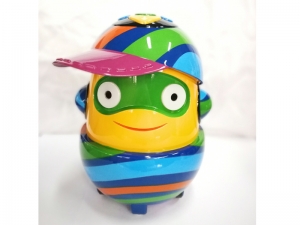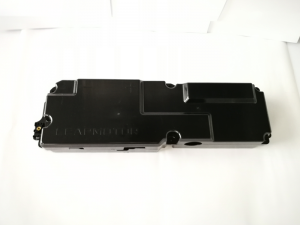Factors Influencing Mold Longevity
The lifespan of a plastic mold depends on several key factors:
Material Used for the Mold
The material of the mold itself plays a significant role in its durability. Molds are typically made from hardened steel, pre-hardened steel, aluminum, or beryllium-copper alloys. Hardened steel molds last the longest, with lifespans often exceeding one million cycles. In contrast, aluminum molds, while cost-effective, are better suited for lower-volume production due to their reduced durability.
Mold Design and Maintenance
Well-designed molds with proper venting, cooling channels, and balanced cavity layouts not only improve efficiency but also extend the mold’s life. Routine maintenance, including cleaning, lubrication, and inspection for wear or damage, is crucial to preventing premature failure.
Type of Plastic Being Processed
Certain plastics, such as reinforced or abrasive materials, can cause more wear on the mold. For example, the production of plastic toy molding often involves using non-abrasive resins, which helps preserve the mold’s condition. On the other hand, abrasive plastics may require molds with specially coated surfaces to resist degradation.
Production Volume and Cycle Time
High-volume production or rapid cycle times can accelerate wear and tear. Manufacturers utilizing custom plastic injection molding often tailor molds to meet specific production needs, balancing speed and longevity.
Expected Lifespan of Plastic Molds
While the exact lifespan varies, here are general estimates based on mold material:
Hardened Steel Molds: Up to 1,000,000 cycles or more. These are ideal for high-volume production, such as automotive parts or plastic injection molded parts for industrial use.
Pre-Hardened Steel Molds: 100,000 to 500,000 cycles. These molds are often used for mid-volume production and general consumer products.
Aluminum Molds: 10,000 to 100,000 cycles. Suitable for prototypes or low-volume runs, such as customized plastic toy molding designs.
To maximize the longevity of a mold, manufacturers implement strategies such as:
Regular Maintenance: Periodic checks for cracks, wear, and misalignment can prevent small issues from escalating.
Proper Storage: Keeping molds in a controlled environment reduces the risk of corrosion or physical damage.
Use of Mold Coatings: Coatings like chrome or nitride provide additional resistance to wear, extending the mold’s usability.
The lifespan of a mold directly impacts production costs and efficiency. For businesses relying on custom plastic injection molding, investing in durable molds ensures consistent quality over time, minimizing downtime and repair costs. Whether producing everyday items or specialized plastic injection molded parts, the durability of molds is integral to maintaining profitability and meeting customer demands.
Understanding the factors that influence mold life allows manufacturers to make informed decisions and deliver products with reliability and precision.












 +1 270-282-2096
+1 270-282-2096
